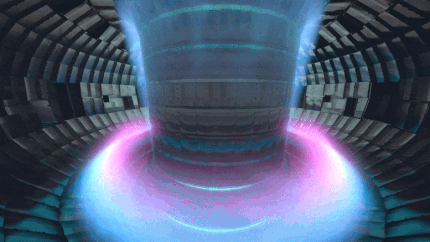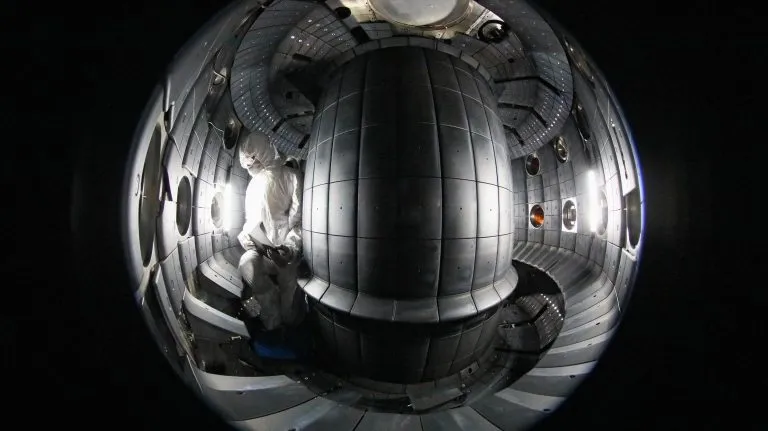Physicists at the Federal Institute of Technology (EPFL) in Lausanne, Switzerland, revised a basic law in a large European cooperation project. This law has been the basis of plasma and fusion research for more than 30 years, and even dominates the design of large projects such as ITER. The update shows that people can actually safely use more hydrogen fuel in fusion reactors to obtain more energy than previously thought**

Nuclear fusion is one of the most promising future energy sources. It involves the merging of two atomic nuclei into one, thus releasing huge energy. In fact, we experience nuclear fusion every day: the warmth of the sun comes from the fusion of hydrogen nuclei into heavier helium atoms.
At present, there is a large-scale international nuclear fusion research project called ITER, which attempts to replicate the nuclear fusion process of the sun and create energy on the earth. Its goal is to produce high-temperature plasma, provide a suitable environment for the occurrence of nuclear fusion and generate energy.
Plasma -- an ionized state of matter similar to a gas -- consists of positively charged nuclei and negatively charged electrons, and its density is almost one millionth of the air we breathe. Protons are produced by placing the "fusion fuel" - hydrogen atoms - at extremely high temperatures (10 times the temperature of the sun's core), forcing electrons to separate from the nucleus. In nuclear fusion reactors, this process takes place in a doughnut ("ring") structure called a "Tokamak".

"In order to create a plasma for nuclear fusion, you have to consider three things: high temperature, high-density hydrogen fuel and good sealing," said Paolo Ricci of the Swiss plasma center, one of the world's leading nuclear fusion research institutions in EPFL.
In a large European cooperation project, Ricci's team has now released a study that updates a basic principle of plasma generation - and shows that the upcoming ITER Tokamak can actually operate with twice the amount of hydrogen, producing more fusion energy than previously thought.
"One of the limitations of making plasma in Tokamak is the amount of hydrogen fuel you can inject," Ricci said. "From the early days of nuclear fusion, we know that if you try to increase the fuel density, at some point there will be what we call 'destruction' - basically you completely lose your constraints and the plasma will run around. Therefore, in the 1980s, people tried to come up with a law that can predict the maximum hydrogen density you can put in Tokamak."
In 1988, scientists had the answer. At that time, fusion scientist Martin Greenwald published a famous law, which linked the fuel density to the small radius of the Tokamak ("the radius of the inner circle of the doughnut") and the current flowing in the plasma in the Tokamak. Since then, "Greenwald limit" has been the basic principle of fusion research; In fact, ITER's Tokamak construction strategy is based on this.
"Greenwald came up with this law based on experience, that is, it comes entirely from experimental data - not a tested theory, or what we call the 'first principle'," Ricci explained. "However, this limit is still very effective for research. Moreover, in some cases, like demo (the successor of the International Thermonuclear Experimental Reactor), this equation poses a great limitation on their operation because it says you can't raise the fuel density above a certain level."
In collaboration with other Tokamak teams, the Swiss plasma center has designed an experiment that can use highly sophisticated technology to accurately control the amount of fuel injected into the Tokamak. These large-scale experiments were carried out in the world's largest Tokamak, the European joint circulation device (jet), the upgraded version of ASDEX in Germany (Max Planck Institute) and EPFL's own TCV tokamak. This large-scale experimental effort was facilitated by the European Union for nuclear fusion, a European organization that coordinates European nuclear fusion research, in which EPFL now participates through the Max Planck Institute for plasma physics in Germany.
At the same time, Maurizio giacomin, a doctoral student in Ricci's group, began to analyze the physical processes that limit the density of tokamaks in order to deduce the first principle method that can link the fuel density to the size of tokamaks. However, some of them involve advanced simulation of plasma using computer models.
"These simulations use some of the world's largest computers, such as those provided by CSCs, the Swiss National Supercomputing Center and eurofusion," Ricci said. "We found through simulation that when you add more fuel to the plasma, part of the fuel will move back from the outer cold layer of the Tokamak, the boundary, to its core, because the plasma becomes more turbulent. Then, unlike the electric copper wire, the electric copper wire becomes more resistant when heated and the plasma becomes more resistant when cooled. Therefore, at the same temperature, the more fuel you put in, the part it cools The more -- the more difficult it is for current to flow in the plasma, which may lead to damage. "
This is a challenge for simulation. "Turbulence in fluids is actually the most important open issue in classical physics," Ricci said. "But the turbulence in the plasma is more complex because you have an electromagnetic field."
Finally, Ricci and his colleagues were able to crack the code and derive a new equation about the fuel limit in the Tokamak, which is in good agreement with the experiment. The research on this equation was published in [Physical Review express] on May 6, 2022( https://journals.aps.org/prl/abstract/10.1103/PhysRevLett.128.185003 ) 》In the magazine, it made a fair evaluation of Greenwald by approaching its limit, but it also made a major update.
According to the new equation, "Greenwald limit" can be nearly tripled in terms of ITER fuel; This means that tokamaks like ITER can actually use nearly twice as much fuel to produce plasma without worrying about interruption. "This is important because it shows that the density you can achieve in a tokamak increases with the power you need to run it," Ricci said. "In fact, demo will operate at much higher power than the current tokamak and ITER, which means you can increase more fuel density without limiting output, which is contrary to Greenwald's law. And this is very good news."